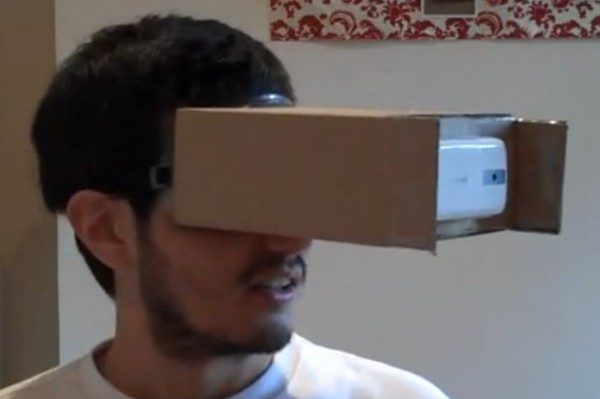 Don’t have $799 to drop on Sony’s upcoming HMZ-T1 head mounted display? Back in 2009 Recombu.com made this video showing how you can make a cheap DIY display out of nothing but plastic goggles, cardboard, and an Android phone:
Don’t have $799 to drop on Sony’s upcoming HMZ-T1 head mounted display? Back in 2009 Recombu.com made this video showing how you can make a cheap DIY display out of nothing but plastic goggles, cardboard, and an Android phone:
[youtube=http://www.youtube.com/watch?v=QyrjBMAa6xE]
Recombu wasn’t too clear about how to get to the Google Maps view so here’s what to do once you build the HMD: launch Google Maps and do a long-press on the map where you want to view. This will bring up a little pop-up box with an arrow on the right side which you’ll want to click. Once you go into the subsequent window, you’ll see a Street View button (if Street View is supported for that location). Once you’re into Street View, press the the menu button on your Android phone, then select Compass View. Now, assuming your phone has a built-in magnometer (almost all modern Android phones do), you’ll be able to control street view just by looking around. The phone will combine the magnometer data for rotation and the accelerometer data for vertical movement, and you’ll have a cheap HMD with intuitive control.
What’s important to note here is that all of this can be accomplished with simple, mostly inexpensive components. All of the technology for intuitively controlled virtual reality exists, we’re just waiting to see someone bring it all together in one experience.






